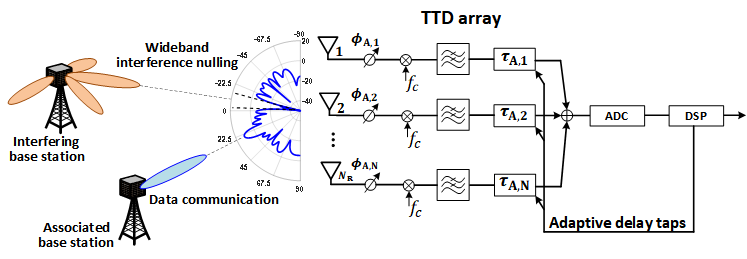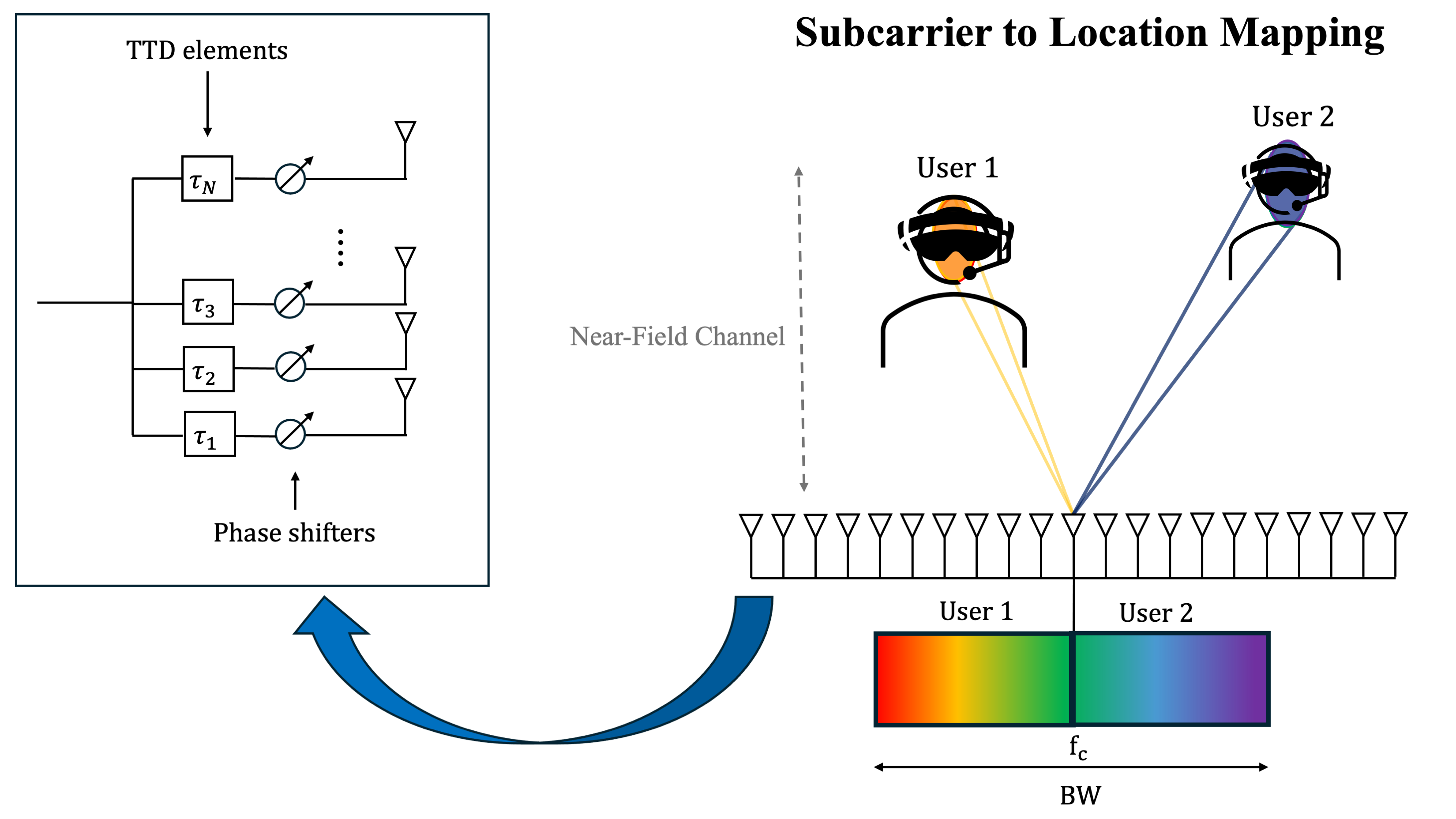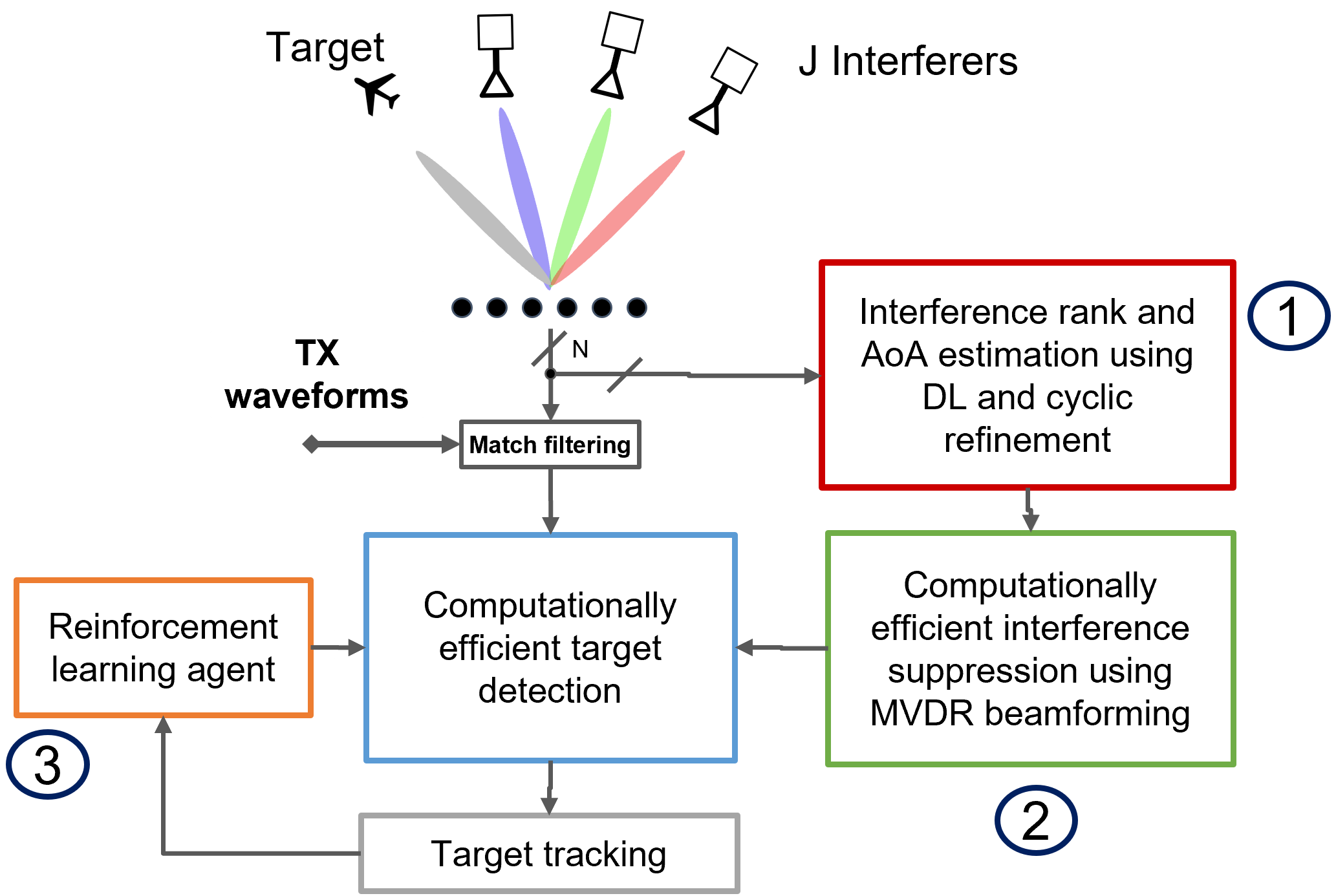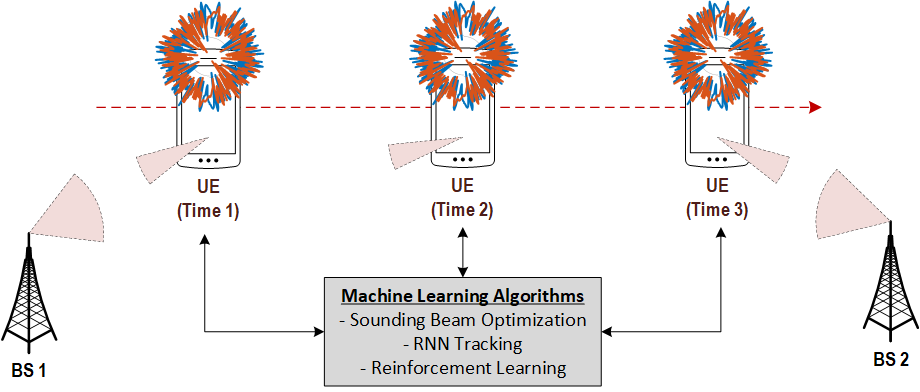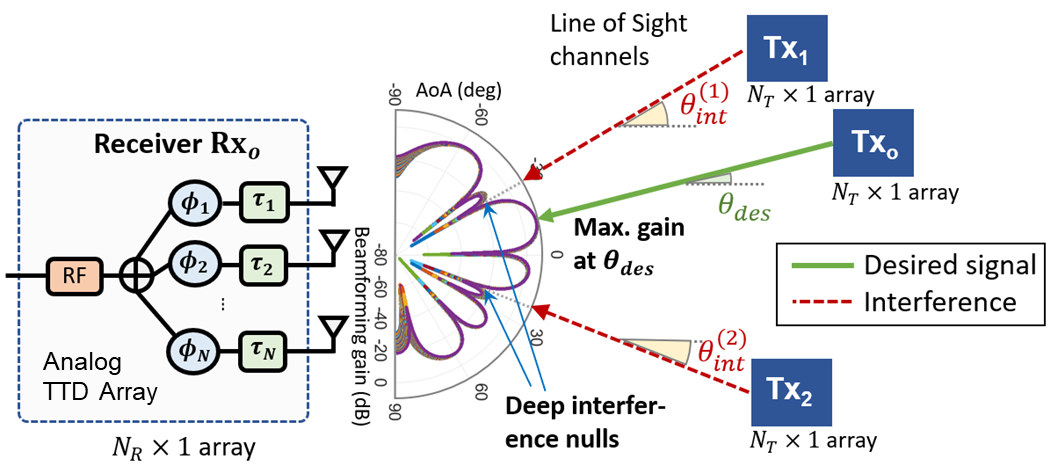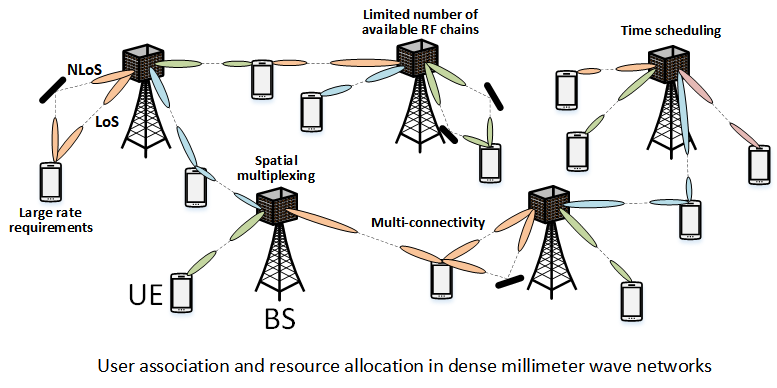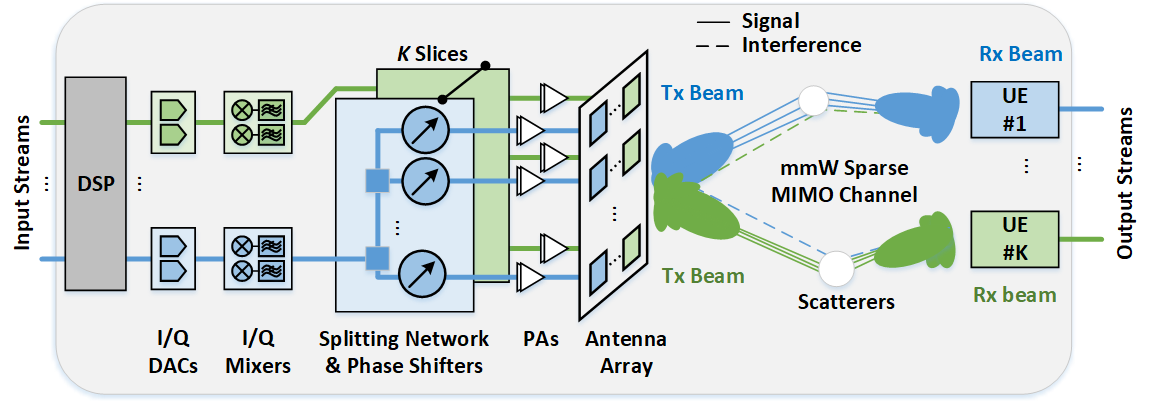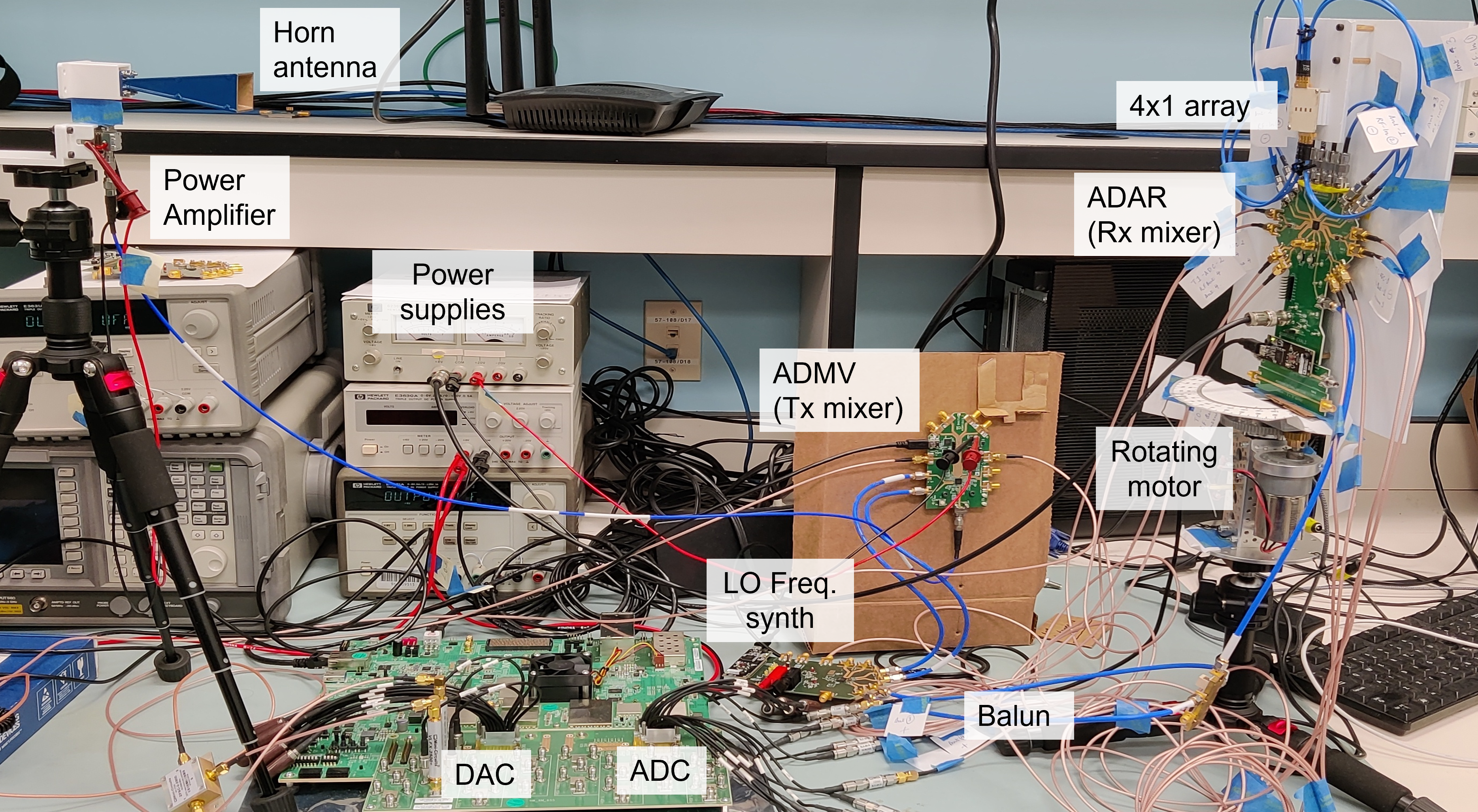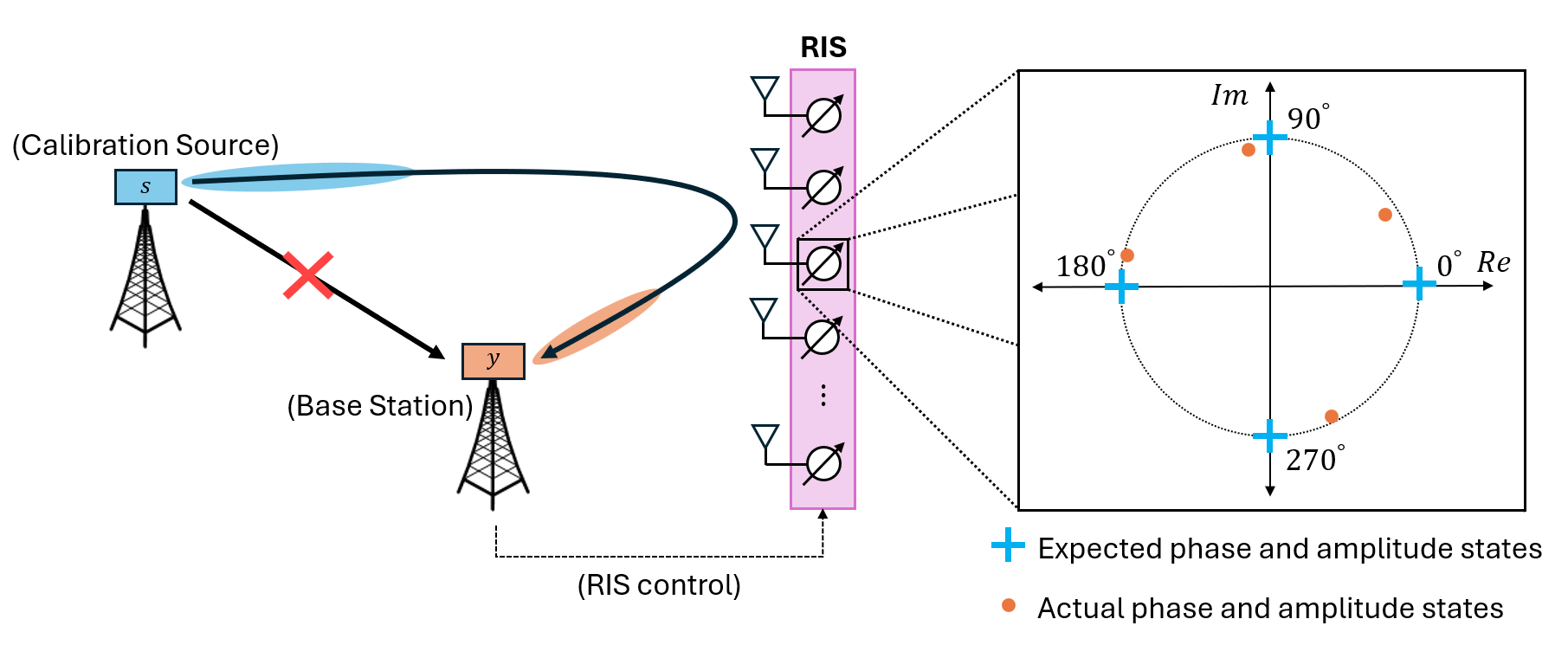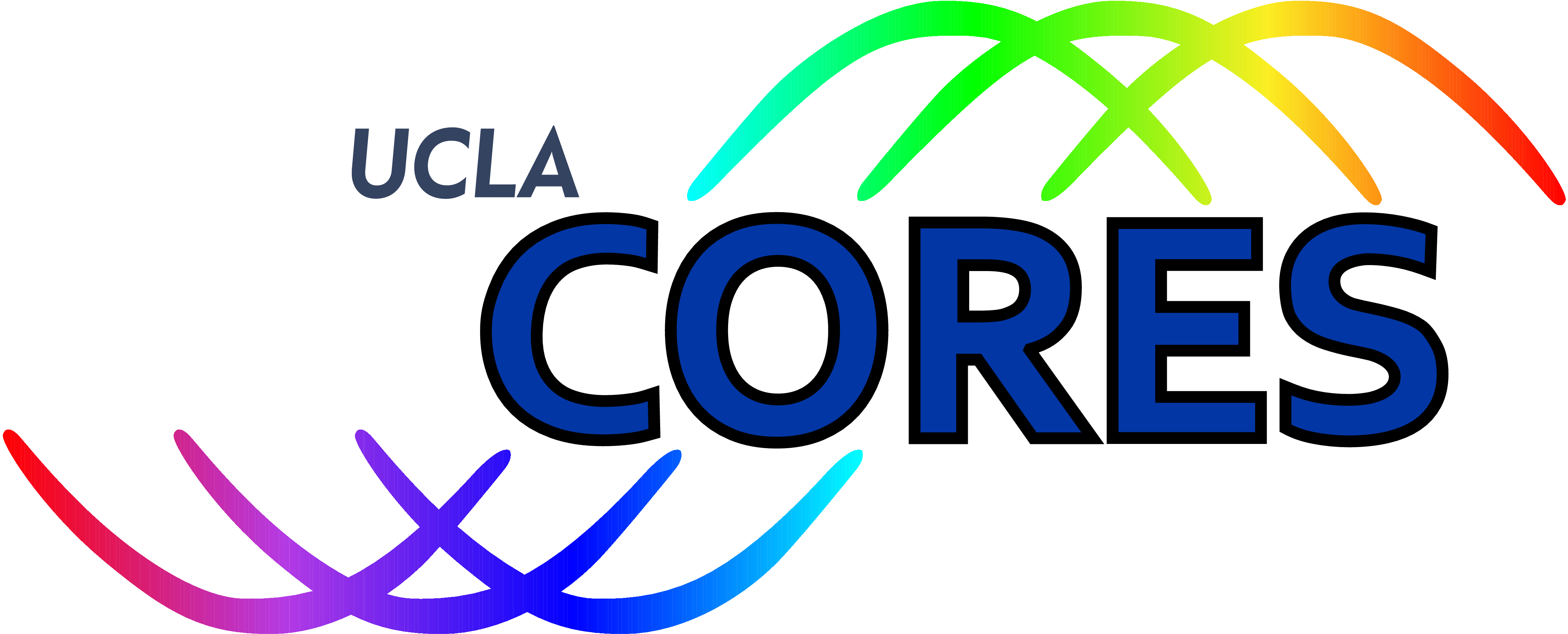
Cognitive Reconfigurable Embedded Systems Lab
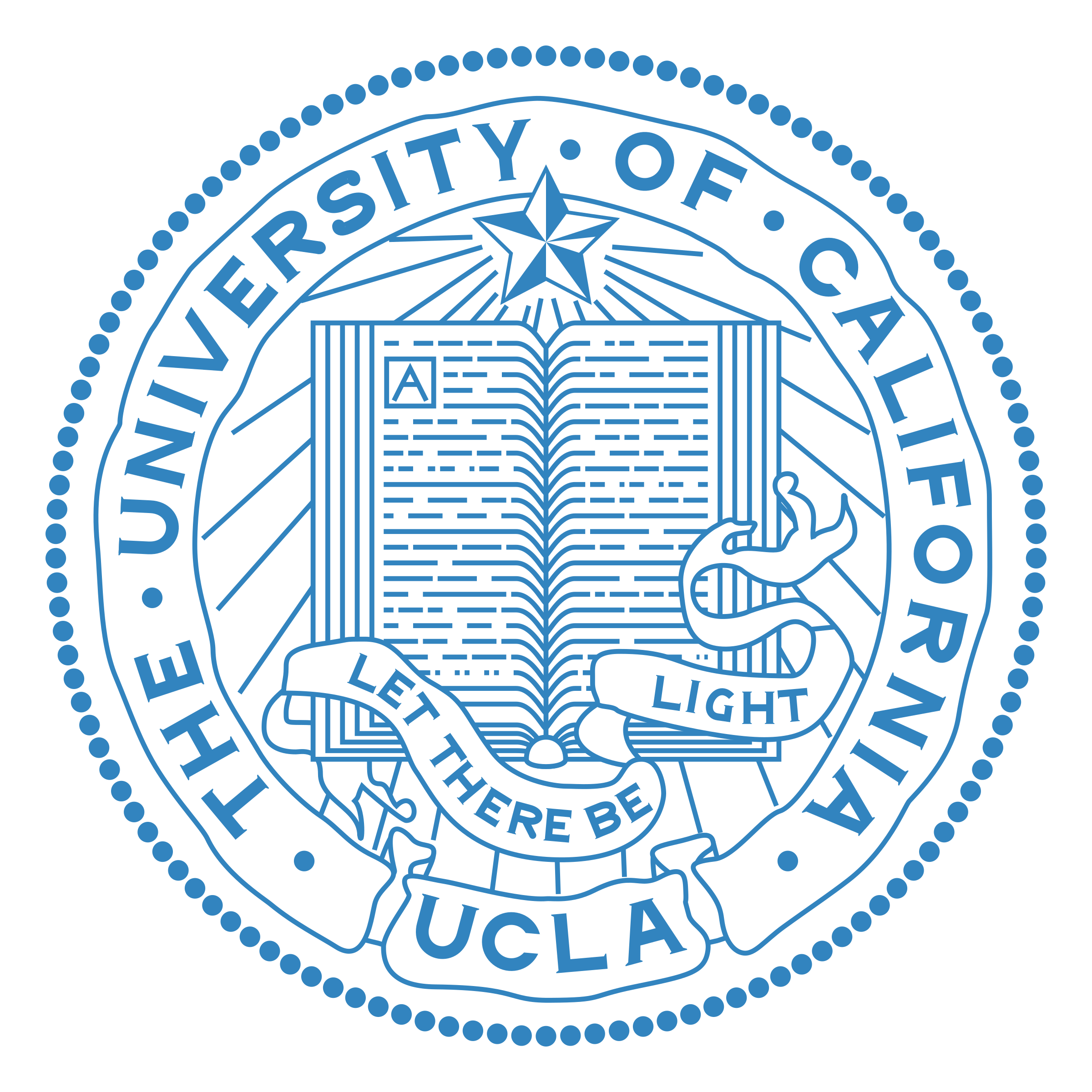
5G Millimeter-Wave Communications
5G and future cellular technology rely on millimeter-wave (mmW) communications to achieve extreme data rates, introducing new algorithm and hardware challenges. Efficient beam alignment is one challenge, due to the narrow beams from large phased arrays required by these high frequency mmW systems. Traditional designs use an exhaustive beam sweep, testing each possible pair of beams, to choose the best pointing direction. User association and resource allocation for future cellular systems require improved algorithms to reduce computational complexity and improve performance under realistic network scenarios. Additionally, transceiver hardware architectures must be optimized for mmW communications. The optimization is constrained by power and circuit impairments due to an order of magnitude higher carrier frequency, processing bandwidth, and number of antenna elements.
Our research addresses these problems through both model-based approaches using signal processing and model-free approaches using machine learning. We have developed novel algorithms that combine compressed sensing and machine learning techniques that use pseudorandom beam designs to estimate angle of arrival information from fewer measurements [1]. Using donated Terragraph 60 GHz channel sounders from Facebook, we have verified our mmW algorithms experimentally [2]. We have comprehensively analyzed the performance of physical layer procedures including initial access, transceiver synchronization, channel tracking, beamforming and multiplexing under hardware impairments and quantified their impact on the power consumption of mmW radios [3]. Recently, we have proposed novel array architecture based on true-time-delay (TTD) arrays as an alternative to phased antenna arrays due to their large delay-bandwidth products. We have shown that TTD arrays can accelerate beam training using frequency-dependent probing beams and achieve high resolution accuracy using a single training pilot [4], [5]. These results hold a great potential and have attracted significant interest and funding from federal agencies and industry.
Our mmW research has been supported by
- NSF grants (1718742 and 1955672)
- SRC multi-university center ComSenTer
Projects
